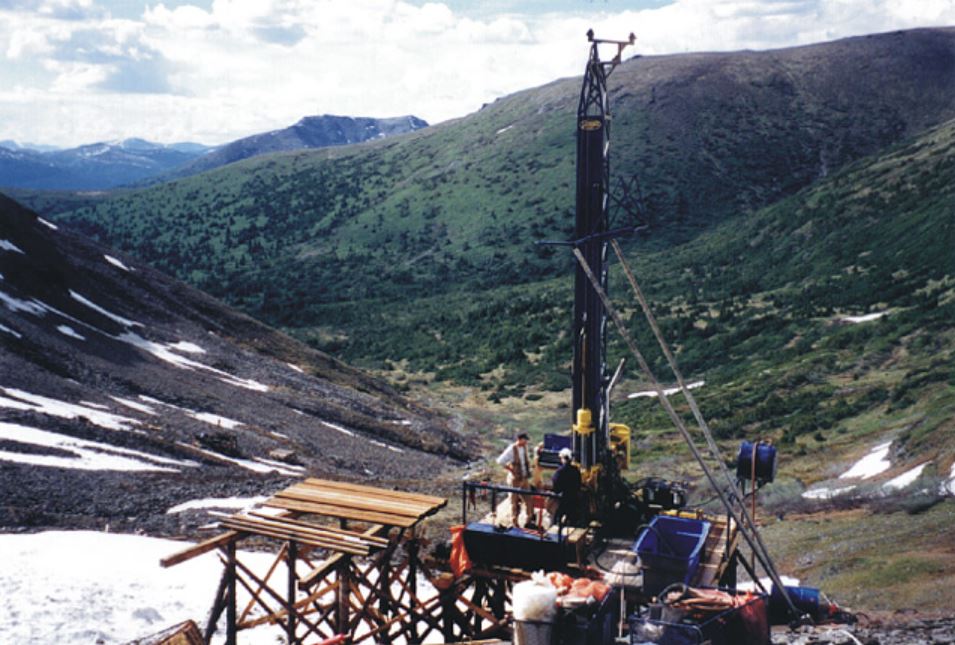Since the onset of the pandemic, material prices have soared. Greg Pitcher recounts the story so far and examines whether the volatile market will calm down any time soon
Construction material prices rose in 11 of the 12 months of 2021, official data shows, with only the smallest of respites in November, when prices stayed constant.
According to an index published by the Department for Business, Energy and Industrial Strategy, contractors were paying, on average, a fifth more for their materials when the bells chimed to herald the start of 2022 than they were 12 months earlier.
Of course, some grades of material rose by far greater amounts. The price of particle board soared by 60 per cent last year, while fabricated structural steel increased in value by a similar amount. And that is before factoring in regional variations and specific contracts that would have seen some contractors hit with eye-watering bills for the items they needed to deliver their projects.
Construction News looks at which parts of the sector have been hit hardest, what contractors should do to mitigate the impact, and what the experts think will happen in future.
Unprecedented change
Construction Products Association chief executive Peter Caplehorn, who co-chairs the Construction Leadership Council (CLC) product availability working group, describes the materials crisis as “a perfect storm” prompted by COVID-19.
“All the major economies of the world closed down and then reopened at different times, which caused different supply and demand curves,” he says. “That caused disruption of the normal smooth pattern of trade.”
This snarled up the shipping system, with vessels and containers out of sync – even before the Suez Canal was blocked for six days in March 2021 by the grounding of a container ship, which exacerbated the problem.
Further obstacles were heaped on top, with unseasonal weather in Scandinavia affecting timber production and some of the world’s biggest timber mills closing for maintenance. “In the UK, we were trying to manage Brexit [regulatory] changes at the borders and that had an impact,” adds Caplehorn.
“One of our surveys found 89 per cent of members had paused work last year due to lack of materials”
Brian Berry, FMB
And at a time when supply was under severe pressure for all these reasons, demand for construction was climbing.
“With everyone at home, people wanted to do works to their home or build a home office. Reports from merchants showed demand up in excess of 40 per cent,” he recalls.
“Historically you see shortages on the world or home stage because of certain things happening in certain parts of the market, but last year we saw all products and all areas of the supply chain affected. This is unprecedented and it’s rooted in the pandemic – many of us have not lived through such a period before.”
While big contractors have undoubtedly been affected, their buying power, relative financial security and the long-term nature of their projects have generally kept them in a stronger position to mitigate spiralling prices than some of their smaller-scale contemporaries.
“For small builders it has been very frustrating on two counts: the cost of materials, but also the availability,” says Federation of Master Builders (FMB) chief executive Brian Berry. “They struggled more than larger contractors to find materials because they are reliant on going to builders’ merchants, so they often had to travel around, which all adds time and money.”
Fixed-price deals with householders, the contracts for which might typically contain less wriggle room than some larger commercial arrangements, also meant some smaller contractors lost money on jobs.
This problem was widespread enough to prompt the insertion of a clause in the standard contract documentation the FMB offers to its members for use with clients. It now states that prices quoted are subject to changes in the cost of materials.
This marked a big change in how this part of the industry generally works, but, despite it being accepted by most customers, it did not end companies’ struggles to mitigate shortages. “One of our surveys found 89 per cent of members had paused work last year due to lack of materials,” Berry says.
Problems with getting the right items to a site ripple far and wide. One delay can have many knock-ons, leaving several contractors affected. And the range of products required is wider than is immediately obvious.
“Last year the bags for the cement were more of a problem than the cement itself,” recounts Berry. Their availability was affected by soaring demand for parcels from stay-at-home workers during the pandemic.
Levelling out in 2022
The CLC’s January update on product availability notes that while some material shortages have eased, major challenges exist elsewhere. Lead times for roof tiles are averaging 24 weeks, rising to 41 weeks for some specifications.
“The UK is in a fortunate position where the majority of the population is vaccinated, but not all parts of the world are as advanced and our supply chains are interwoven”
Kris Hudson, Turner & Townsend
Huge global demand for semiconductors, and a tendency for suppliers to prioritise orders to other sectors, means manufacturers of boilers, white goods and air-source heat pumps could soon struggle to get hold of these critical items, the effect of which would hit many construction projects.
According to the update, domestic production of bricks is at full capacity and no new UK plants are expected on stream before next year, meaning imports will be required to match project need.
However, Caplehorn sees demand “levelling out in 2022, mainly because of the wider economy”. He points to soaring inflation and rising taxes, as well as the longer-term reduction in the number of people working in offices and town centres, as dampeners on investor confidence.
Berry calls for the government to manage the economy by supporting small-scale builders this year, which could be caught “between a rock and a hard place” as demand falls and input costs remain high.

Huge towers of shipping containers piled up at the port of Felixstowe in October 2021 due to a shortage of lorry drivers Picture: ALAMY
Big contractors not immune
Turner & Townsend associate director Kris Hudson says 2021 witnessed a series of “compressed market movements” that would usually take several years to play out.
“There are still pressures on material prices and availability,” he says. “There are still issues in terms of haulage and accessibility of certain materials and components. The feedback we get is that pressures are still there and they are contributing to increases in prices.”
Hudson adds that big contractors are far from immune to the challenges. “On larger programmes, you need much more material and plant, and procuring all that is more difficult than finding a smaller amount.”
COVID-19 has been at the root of the materials crisis and could still have a say in how it develops.
He says: “The UK is in a fortunate position where the majority of the population is vaccinated against the pandemic, but not all parts of the world are as advanced and our supply chains are interwoven. There are knock-on effects if supply chains in other parts of the world have an increase in cases.”
Political and economic issues closer to home could also have an impact on material prices and availability this year.
“Brexit affects people movement, and manufacturing facilities rely on people to work on a production line to deliver materials,” says Hudson. “Difficulty in getting the right skills in can have an impact.”
Policy changes to allow people to move freely in sectors where there are shortages of materials could ease the situation, he adds. Meanwhile, the rise in building-component prices could itself dampen demand for construction projects, which may in turn reduce the pressure on prices.
A slowing market
Morgan Sindall chief executive John Morgan told CN in November that cost inflation had slowed the process of winning new work. Later that month, Matt Voyce, executive director at developer Quintain, told delegates at the CN Summit that investment could be withheld because of material price fears.
Hudson agrees that some clients do have “viability concerns”. If prices keep rising, there “could be a deferral of decision-making”, he says. But he does not expect to see the same level of cost inflation this year.
“There was an extreme escalation in price of certain materials and components last year, and the base effect inherently promotes a lower growth rate this year,” he says. “It will very much depend on how global supply chains react if the pandemic or anything else comes into play in future.”
Hudson advises contractors to focus on other areas to minimise the impact of unexpected material price hikes.
“Perhaps look at productivity improvements such as digital working,” he suggests. “The more efficient ways you deliver projects, the better you minimise cost pressures. Control what you can, reduce errors and scrappage, [and] do more with less to manage and mitigate inflationary pressures that materialise from factors outside your control.”
Offsite construction is another route that the industry can look towards if it wants to tighten its grip on costs, says Hudson, adding: “Although it does not directly resolve the issue, it gives you more control and leaves you less exposed to random events affecting you on site. The pandemic has shone a light on some aspects of the industry that could improve.”
Collaborative gains
Many parts of the building trade could also look to the civils sector for tips. “There are lessons to be learned from bigger infrastructure schemes – pain-and-gain sharing, collaboration, looking at longer-term programmatic approaches,” Hudson says. “This all mitigates against ups and downs in the market.”
“As long as the pandemic is around, there is a risk of the materials crisis resurfacing”
Peter Caplehorn, CPA
He urges contractors to develop a deeper understanding of their supply chains: “Stay close to suppliers, do due diligence to know where components are coming from, and see the extent of exposure and risk. Use information and digital tools to increase the intelligence you have to support decision-making.”
Despite not believing that the industry has seen the back of the impact of COVID-19, Hudson offers some hope for the year ahead. “There could be peaks and troughs, but the longer you work in an environment, the more you learn and the quicker you can adopt best practice,” he says. “Supply chains will hopefully recalibrate and become quicker at reacting to global events.”
Even if materials become more available, prices ease and contractors adapt to managing supply chains throughout the remainder of the pandemic, there remains at least one more sting in the tail to watch out for.
“If contractors priced a little lower in 2020 during the fallow period to make sure cashflows were there, then heightened material and labour costs since then could create issues to delivery,” Hudson warns.
“There is data to show that insolvencies have risen in construction. All tiers of the supply chain need to work closely together to understand where things are so they can effectively manage and mitigate any unfortunate effects that can affect project programmes and cost.”
Berry says contractors need to be cautious when pricing work this year and make allowances for the fact that material prices can rise.
“Sadly, some companies have gone into liquidation because they’ve not managed their costs,” he says. “It requires more diligence in terms of managing contracts and timings and communications with clients. If you are sensible, you will put in a bit of leeway.”
Meanwhile, Caplehorn points out that there are fresh challenges on the horizon for material suppliers in the form of decarbonisation and energy prices. “Our high, intensive energy uses are under scrutiny,” he says. “It won’t stop things being produced, but it is an issue to work through. It is something for people to plan for.”
Yet, despite the huge issue of climate change, the industry cannot take its eye off COVID yet.
“As long as the pandemic is around, there is a risk of the materials crisis resurfacing,” says Caplehorn. “The World Health Organization has said no one is safe until everyone is safe. There is potential for more disruption.”
Note: This article have been indexed to our site. We do not claim legitimacy, ownership or copyright of any of the content above. To see the article at original source Click Here








